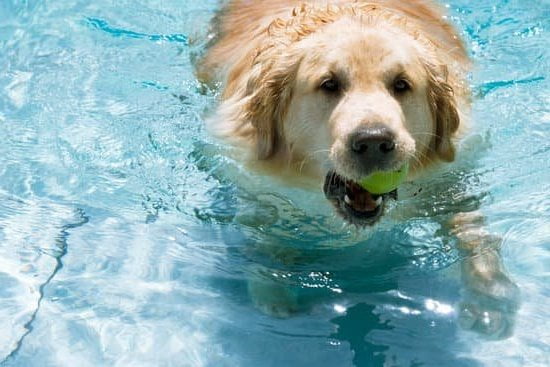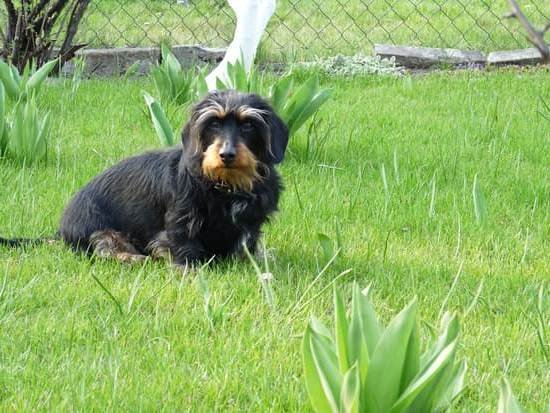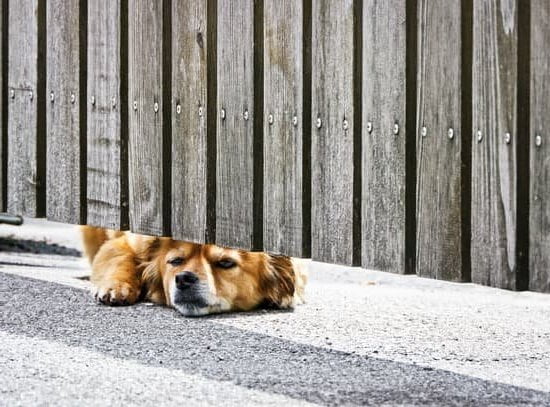Dogs can be wonderful companions, but some may exhibit aggression towards other dogs, causing stress and concern for their owners. If you’re wondering how to train your dog to not be dog aggressive, it’s important to first understand the underlying causes and triggers of this behavior. Aggression in dogs can stem from fear, territoriality, possessiveness, or even pain. Identifying what is causing your dog’s aggressive behavior is crucial in finding effective solutions.
Some common signs of dog aggression include growling, barking, lunging, snapping, or biting. It’s important for pet owners to recognize these behaviors early on and take proactive steps to address them. Consulting with a professional trainer or behaviorist can provide valuable insight into your dog’s aggression issues and help develop a personalized training plan.
Positive reinforcement training techniques are often recommended for addressing dog aggression. By rewarding good behavior and redirecting negative behavior towards more positive actions, you can effectively modify your dog’s responses to triggers. Socialization with other dogs under controlled settings can also help desensitize your dog to potential triggers and improve their behavior around other animals.
Signs and Symptoms of Dog Aggression
Understanding the signs and symptoms of dog aggression is crucial in addressing and preventing aggressive behaviors in your canine companion. By being able to recognize these indicators, you can take proactive steps to address the issue before it escalates. Here are some common signs that your dog may be exhibiting aggression towards other dogs:
- Growling or barking excessively at other dogs
- Showing teeth, raising hackles, or a stiff body posture when approaching other dogs
- Snarling, snapping, or lunging towards other dogs
If you notice any of these behaviors in your dog, it’s essential to address them promptly to avoid potential conflicts with other pets or people. Understanding the root cause of your dog’s aggression can help tailor your training approach effectively.
How to Train Your Dog to Not Be Dog Aggressive
Training your dog to not be dog aggressive requires patience, consistency, and positive reinforcement techniques. By following these steps, you can help modify your dog’s behavior and promote more peaceful interactions with other dogs:
- Consult with a professional trainer or behaviorist to assess your dog’s behavior and develop a customized training plan.
- Implement positive reinforcement techniques such as rewarding good behavior with treats or praise when your dog interacts calmly with other dogs.
- Socialize your dog with other well-behaved canines in controlled environments to help them learn appropriate social skills and reduce fear or anxiety triggers.
By incorporating these training methods into your routine and closely monitoring your progress, you can help your furry friend overcome their aggression towards other dogs. Remember that each dog is unique, so be patient and consistent in your efforts to see positive results over time.
Consult With a Professional Trainer or Behaviorist
Benefits of Consulting a Professional Trainer or Behaviorist
Seeking the help of a professional trainer or behaviorist can be incredibly beneficial when dealing with dog aggression. These experts have the knowledge and expertise to assess your dog’s behavior, identify the root cause of their aggression, and create a customized training plan to address the issue. Additionally, professional trainers can provide you with valuable tips and techniques on how to effectively train your dog to not be dog aggressive.
Working Closely With Your Trainer or Behaviorist
When consulting with a professional trainer or behaviorist, it is important to actively participate in the training process. Be open and honest about your dog’s behavior, follow their guidance closely, and ask any questions you may have along the way. It is crucial to maintain clear communication with your trainer or behaviorist to ensure that you are both on the same page regarding your pet’s progress and any adjustments needed in their training regimen.
The Role of Professional Training in Alleviating Dog Aggression
Professional trainers and behaviorists use a variety of techniques such as desensitization, counter-conditioning, and positive reinforcement to modify your dog’s behavior towards other dogs. Through consistent training sessions and ongoing support from these experts, you will learn how to train your dog to not be dog aggressive effectively.
Remember, each dog is unique and may respond differently to training methods, so having a professional by your side can make a significant difference in helping your furry friend overcome their aggressive tendencies.
Positive Reinforcement Training Techniques
What Is Positive Reinforcement Training?
Positive reinforcement training is a method that focuses on rewarding desired behaviors rather than punishing unwanted behaviors. This approach uses treats, toys, praise, or other rewards to motivate and encourage dogs to exhibit the behavior that is desired by their owners. Positive reinforcement training techniques are highly effective in teaching dogs new skills and can help modify aggressive behaviors like dog aggression.
How to Implement Positive Reinforcement Training
When using positive reinforcement training techniques to address dog aggression, it’s essential to start with simple commands and behaviors before moving on to more complex tasks. For example, you can begin by teaching your dog basic obedience commands such as sit, stay, and come using treats as rewards. Once your dog has mastered these commands, you can gradually introduce training sessions that focus on reducing aggressive behaviors towards other dogs.
It’s important to be consistent with your rewards and timing when implementing positive reinforcement training. Dogs learn best when they receive immediate feedback for their actions, so make sure to reward your dog as soon as they display the desired behavior. Additionally, it’s crucial to keep training sessions short and engaging to maintain your dog’s interest and motivation.
Reinforcing Non-Aggressive Behaviors
To train your dog not to be dog aggressive, you can use positive reinforcement techniques to reinforce non-aggressive behaviors when interacting with other dogs. For instance, if your dog remains calm and relaxed around another canine companion, reward them with treats or verbal praise.
By consistently rewarding non-aggressive behaviors and ignoring or redirecting aggressive reactions, you can help your dog learn how to behave appropriately in social situations with other dogs. Remember that every interaction counts in shaping your dog’s behavior positively.
Socialization With Other Dogs
One of the key components in addressing dog aggression is socializing your canine friend with other dogs. Proper socialization can help your dog become more comfortable and confident around other pups, ultimately reducing aggressive behaviors. Here are some tips on how to train your dog to not be dog aggressive through socialization:
- Start with controlled introductions: Begin by introducing your dog to calm, well-behaved dogs in a controlled environment. Keep the interactions short and positive, rewarding good behavior with treats or praise. Gradually increase the duration and complexity of the interactions as your dog becomes more comfortable.
- Enroll in obedience classes: Obedience classes are a great way for your dog to interact with other dogs under the supervision of a professional trainer. These classes can help improve your dog’s social skills and teach them how to respond appropriately in various situations.
- Arrange playdates: Organize playdates with friends or family members who have well-behaved dogs. Make sure the play sessions are supervised and that both dogs are on leash initially to prevent any potential conflicts.
By actively engaging in socialization activities, you can help your dog learn appropriate behaviors around other dogs and reduce their aggressiveness over time. Remember, patience and consistency are key when it comes to training your furry friend to be more sociable and friendly towards their canine companions.
Managing Your Dog’s Environment
When it comes to training your dog to not be dog aggressive, managing your dog’s environment plays a crucial role in preventing and addressing aggression issues. One of the first steps in this process is to identify potential triggers that may lead to aggressive behavior in your dog. By understanding what situations or stimuli can provoke aggression in your furry friend, you can take proactive measures to avoid or minimize exposure to these triggers.
To create a safe and controlled environment for your dog, consider implementing measures such as keeping your dog on a leash during walks, using baby gates to separate your dog from other pets or visitors, and providing a designated space where your dog can retreat when feeling overwhelmed. Additionally, it is important to ensure that your dog has a secure and comfortable living space free from stressors that may contribute to aggressive behavior.
Another aspect of managing your dog’s environment is properly socializing them with other dogs. This involves carefully introducing your dog to well-behaved and friendly canine companions in controlled settings. By gradually exposing your dog to positive social interactions with other dogs, you can help them build confidence and reduce their likelihood of displaying aggression towards unfamiliar canines.
It is essential to remember that creating a structured and consistent environment for your dog is key in reducing aggression. By establishing clear rules and boundaries, providing ample opportunities for mental and physical stimulation, and maintaining a predictable routine, you can help support positive behavior in your four-legged companion. Remember that every interaction and experience shapes your dog’s behavior, so consistency and patience are vital when working on training them not to be dog aggressive.
| Training Technique | Description |
|---|---|
| Proper Socialization | Gradually expose the dog to other friendly dogs under controlled circumstances. |
| Creating Safe Spaces | Provide designated areas where the dog can feel secure and retreat when needed. |
| Establishing Routine | Maintain consistency in daily activities, rules, and boundaries set for the dog. |
Establishing Leadership and Boundaries
One way to establish leadership and boundaries is through consistent obedience training. Teaching your dog basic commands such as sit, stay, and come can help reinforce your role as the leader. Make sure to always follow through with commands and consistently set boundaries for acceptable behavior. This will help your dog understand what is expected of them and reduce any confusion that may lead to aggression.
Additionally, providing structure and routine in your dog’s daily life can also help establish leadership. Dogs thrive on consistency, so establishing regular feeding times, walking schedules, and playtime routines can create a stable environment for your pet.
When dogs know what to expect, they are less likely to feel anxious or threatened, which can contribute to aggressive behavior. By being a calm and assertive leader for your dog, you can help foster a positive relationship based on respect and trust.
| Statistic | Percentage |
|---|---|
| Dogs exhibiting aggression due to lack of socialization | 30% |
| Dogs’ response rate to consistent obedience training | 80% |
Consistency and Patience
Training a dog to not be dog aggressive requires consistency and patience from the owner. It is important to understand that changing a behavior takes time, and progress may not happen overnight. Consistency in training methods, routines, and expectations is crucial in helping your dog overcome their aggression towards other dogs. By reinforcing positive behaviors consistently and addressing any instances of aggression immediately, you can help your dog understand what is expected of them.
Patience is another key component in training your dog to not be dog aggressive. It is essential to remain calm and composed during training sessions, as getting frustrated or angry can cause setbacks in your dog’s progress. Dogs are sensitive to their owners’ emotions, so maintaining a patient demeanor can help create a positive learning environment for your furry friend.
Remember that every dog is unique, and some may take longer to change their behavior than others. By practicing patience and persevering through challenges, you can support your dog in becoming more social and less aggressive towards other dogs.
Consistency and patience go hand in hand when it comes to training your dog to not be dog aggressive. It is important to have realistic expectations and understand that there may be ups and downs along the way.
Celebrate small victories and milestones with your dog, while also being prepared for setbacks or obstacles during the training process. By staying committed to the training plan, remaining patient with your pooch, and seeking professional guidance when needed, you can help your furry companion learn how to interact positively with other dogs over time.
Monitoring Progress and Seeking Professional Help if Needed
In conclusion, training a dog to not be dog aggressive requires dedication, patience, and consistency from the owner. Understanding the causes and triggers of dog aggression is crucial in addressing the issue effectively. Signs and symptoms should be closely monitored to determine the progress of the training process.
Consulting with a professional trainer or behaviorist can provide valuable guidance and expertise in developing a personalized training plan for your dog. Positive reinforcement techniques, socialization with other dogs, and establishing leadership and boundaries are essential components of this training process.
Remember that consistency and patience are key to success when working on modifying your dog’s behavior. Regularly monitoring progress and seeking professional help if needed will ensure that your efforts are yielding positive results. By following these steps diligently, you can successfully train your dog to not be dog aggressive and enjoy a harmonious relationship with your furry friend.
Frequently Asked Questions
How Do I Stop My Dog From Being Aggressive to Other Dogs?
One way to stop your dog from being aggressive towards other dogs is through proper socialization and training. Gradually exposing your dog to other dogs in controlled settings can help them learn appropriate behavior and reduce aggression.
Is There a Way to Make a Dog Less Aggressive?
Making a dog less aggressive involves identifying the root cause of their aggression. It could be fear, territorial behavior, or lack of socialization. Working with a professional trainer or behaviorist can help you address these issues and modify your dog’s behavior.
How Do You Calm an Aggressive Dog?
Calming an aggressive dog requires patience and understanding. Avoid punishing or yelling at the dog, as this can escalate the situation. Instead, use positive reinforcement techniques like rewarding calm behavior and teaching them alternative ways to cope with stress or fear.

Welcome to the blog! I am a professional dog trainer and have been working with dogs for many years. In this blog, I will be discussing various topics related to dog training, including tips, tricks, and advice. I hope you find this information helpful and informative. Thanks for reading!





